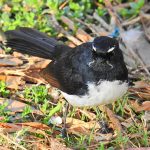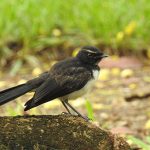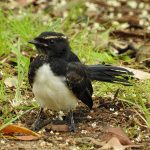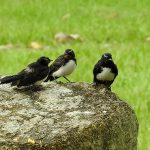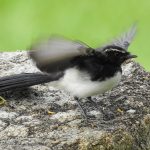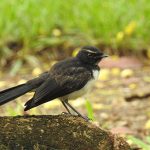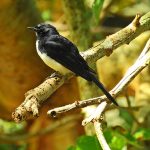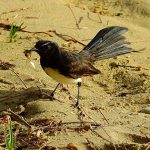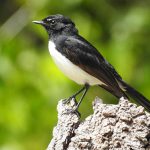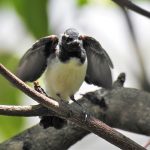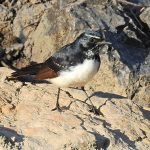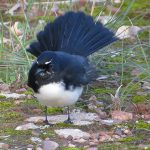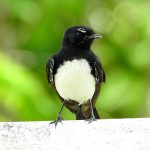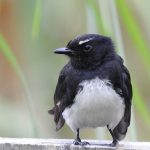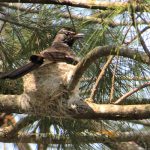WILLIE WAGTAIL
The Willie Wagtail is a small, slender bird known for its distinctive black and white plumage and long, fanned tail. It measures about 19-21 cm in length. The upperparts of the bird are glossy black, while the underparts are white. It has a prominent white eyebrow and a black throat. The tail feathers are black with white tips, which are fanned out and wagged from side to side, giving the bird its name.
Willie Wagtails are widely distributed across Australia, inhabiting a variety of habitats including woodlands, grasslands, gardens, parks, and near water bodies such as rivers and wetlands. They can be found throughout the mainland and are also present in Tasmania.
These birds are known for their active and bold behavior. They are highly territorial and defend their nesting sites vigorously. Willie Wagtails are insectivorous and feed primarily on insects such as flies, mosquitoes, beetles, and spiders. They are agile fliers and often catch insects on the wing, displaying impressive aerial acrobatics.
Willie Wagtails construct cup-shaped nests made of grass and other plant materials, often placed on horizontal branches of trees, shrubs, or man-made structures like fences and buildings. Both the male and female participate in building the nest. They are known for their distinct tail-wagging courtship display. The female typically lays three to four eggs, which are incubated by both parents. After hatching, both parents care for and feed the chicks.
Willie Wagtails are known for their melodious and varied vocalizations. Their calls consist of a range of whistling, trilling, and chattering sounds. Their vocal repertoire includes alarm calls, territorial calls, and songs, which they use to communicate with other birds and defend their territories.

